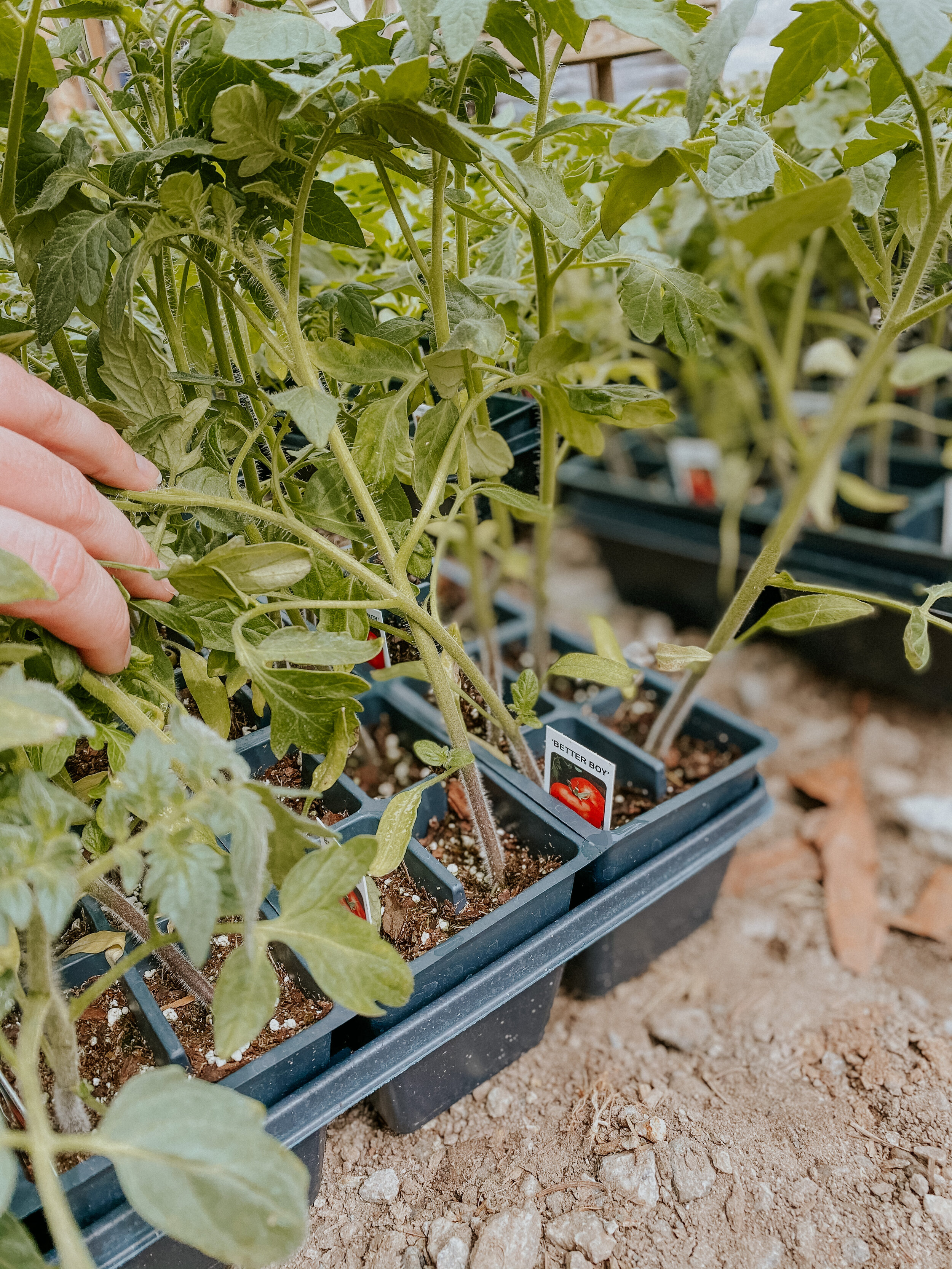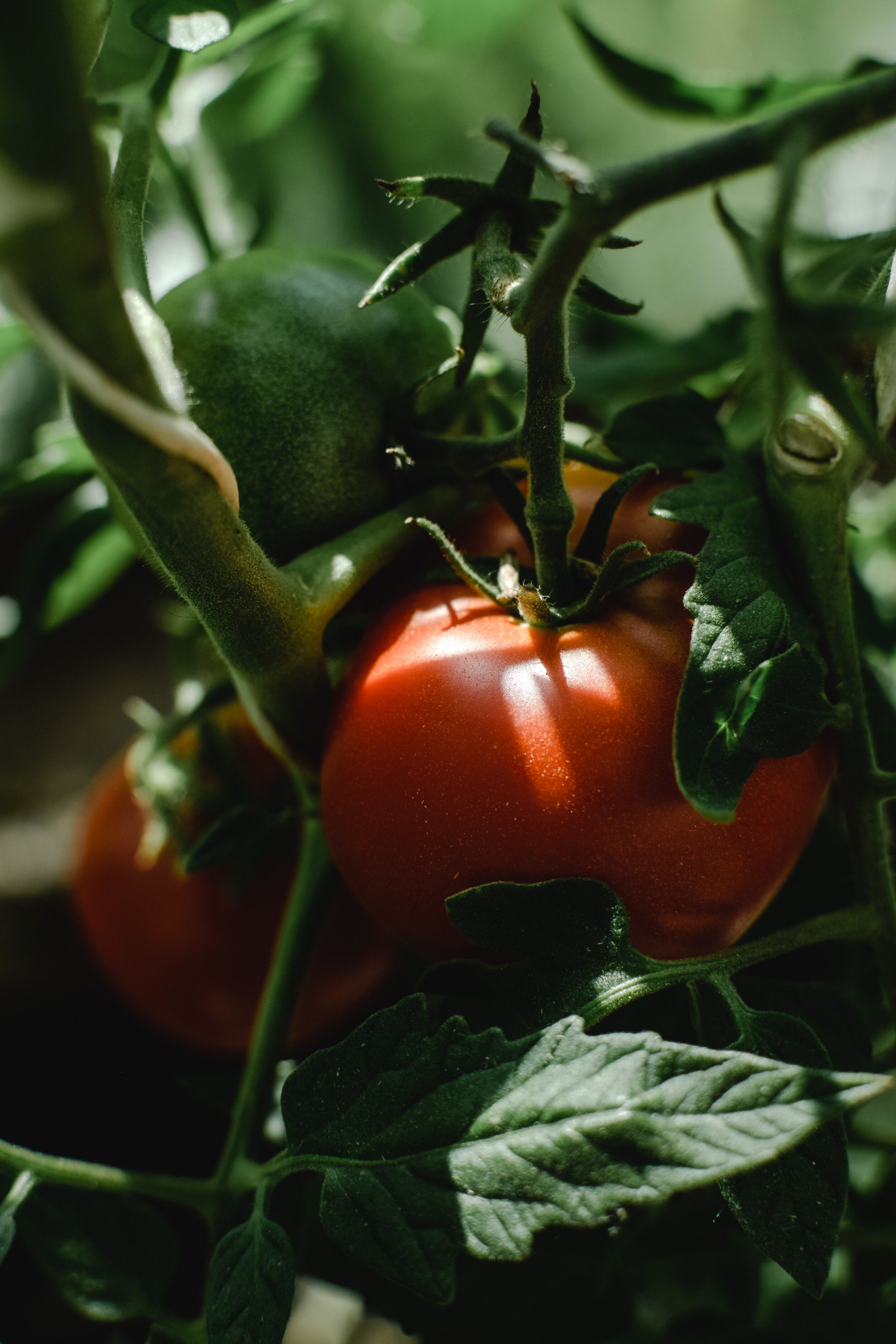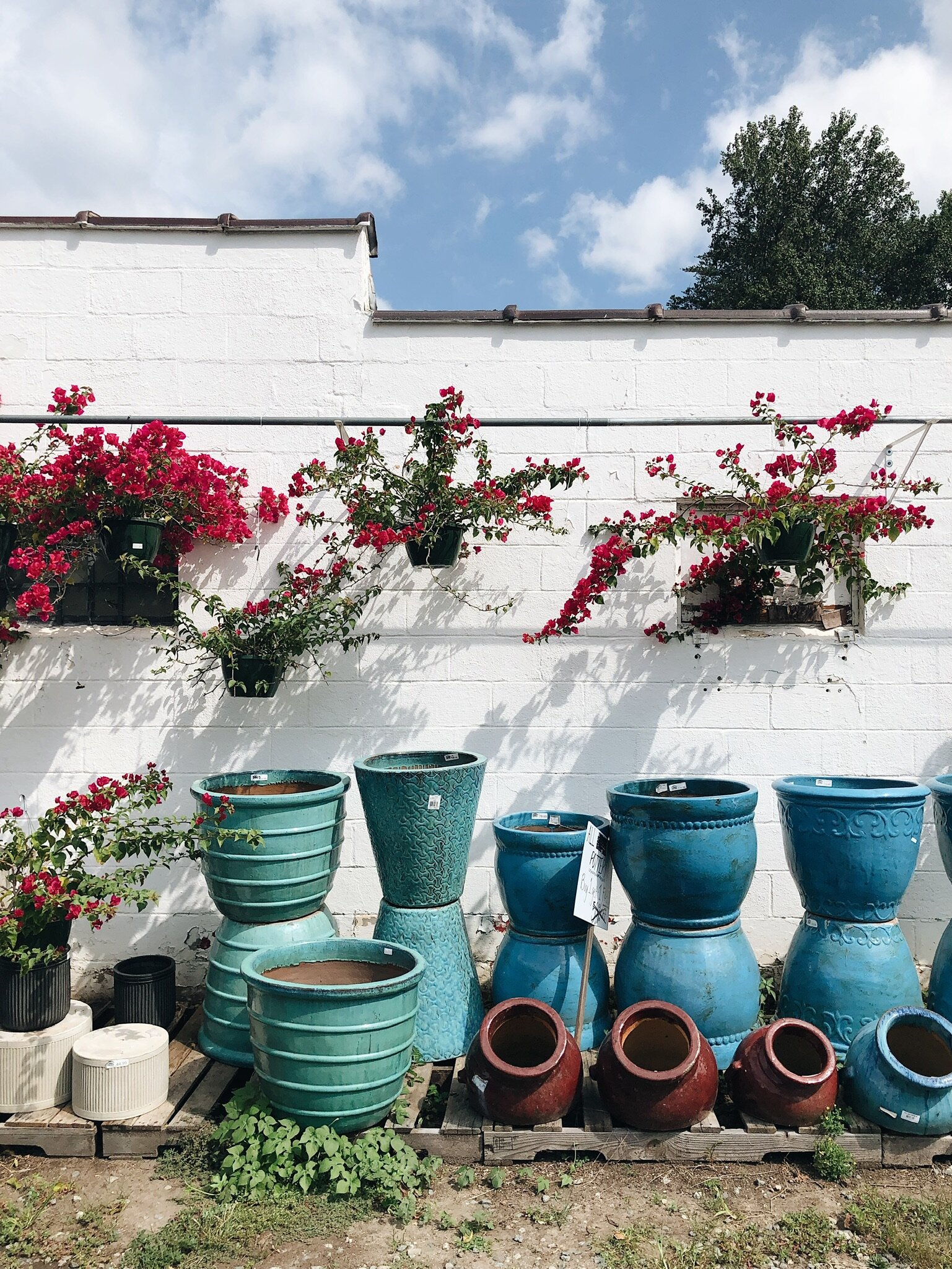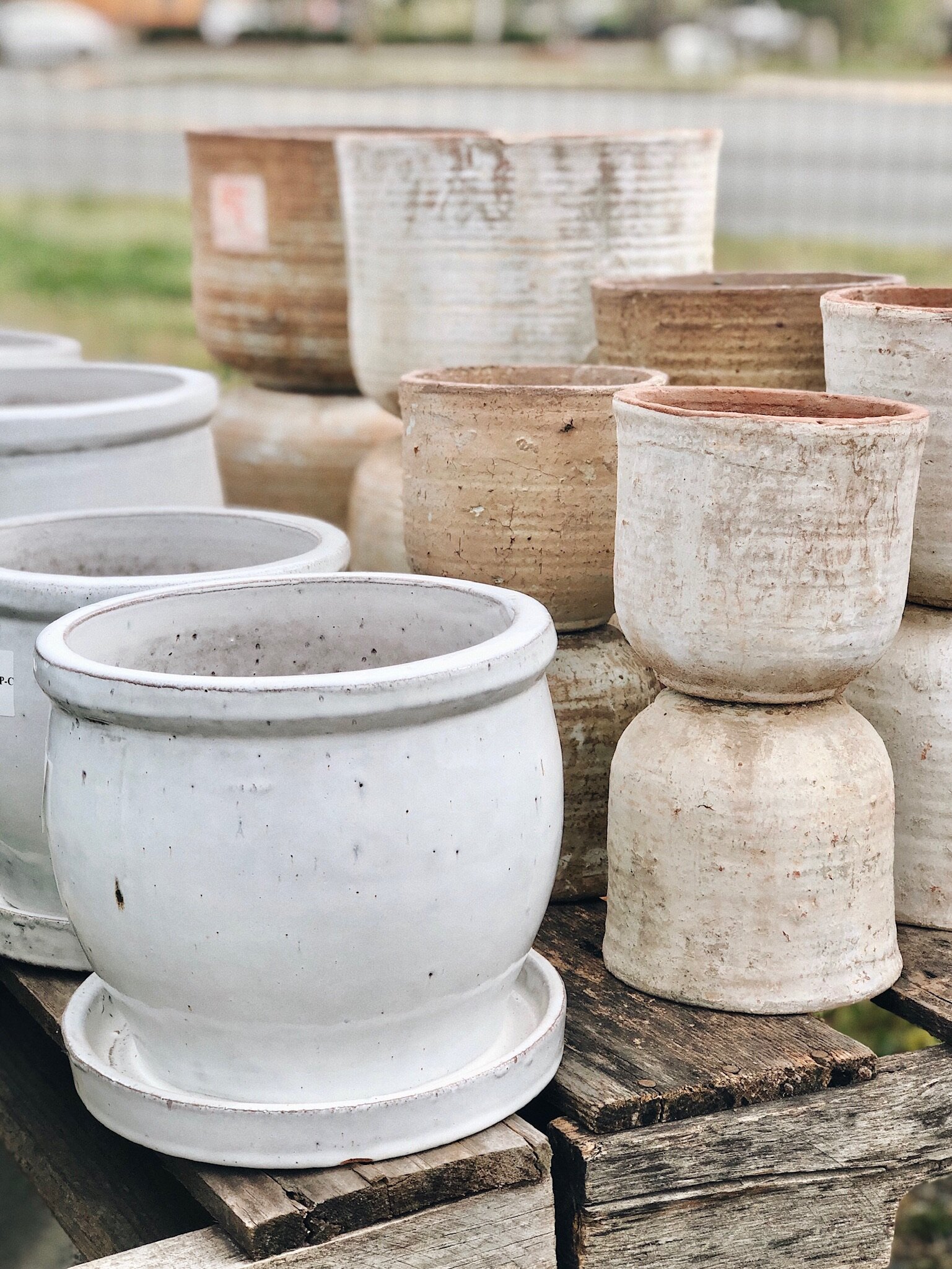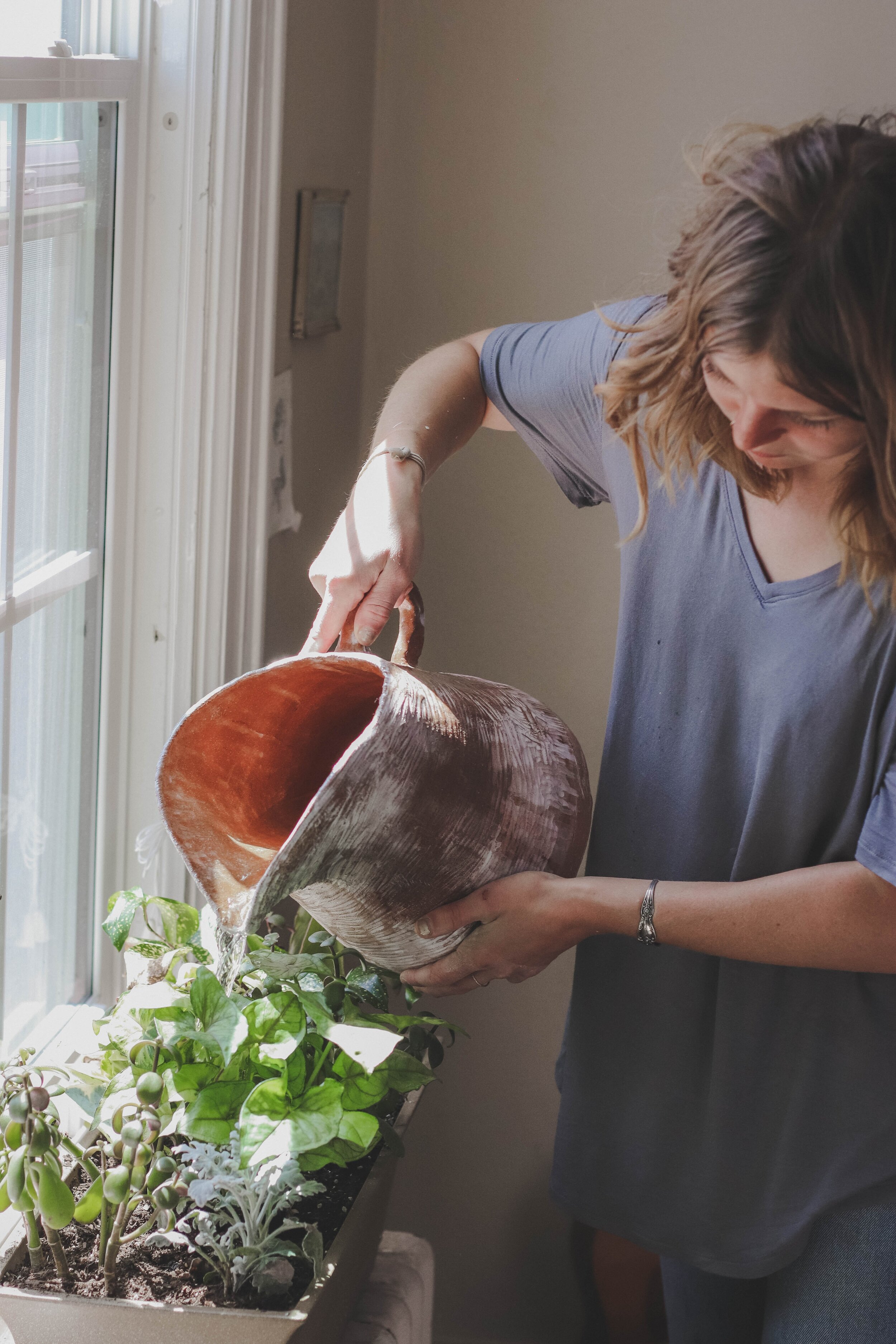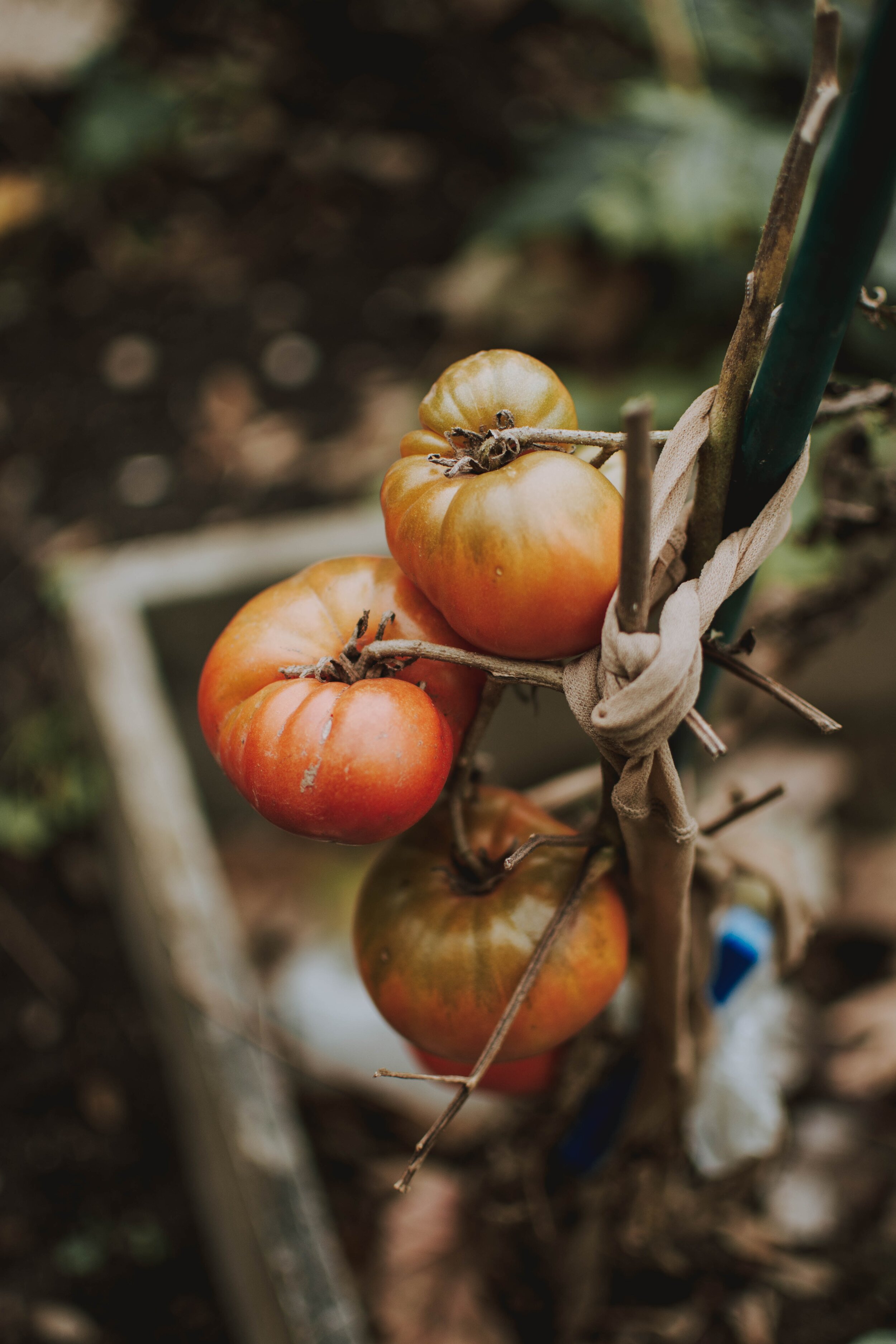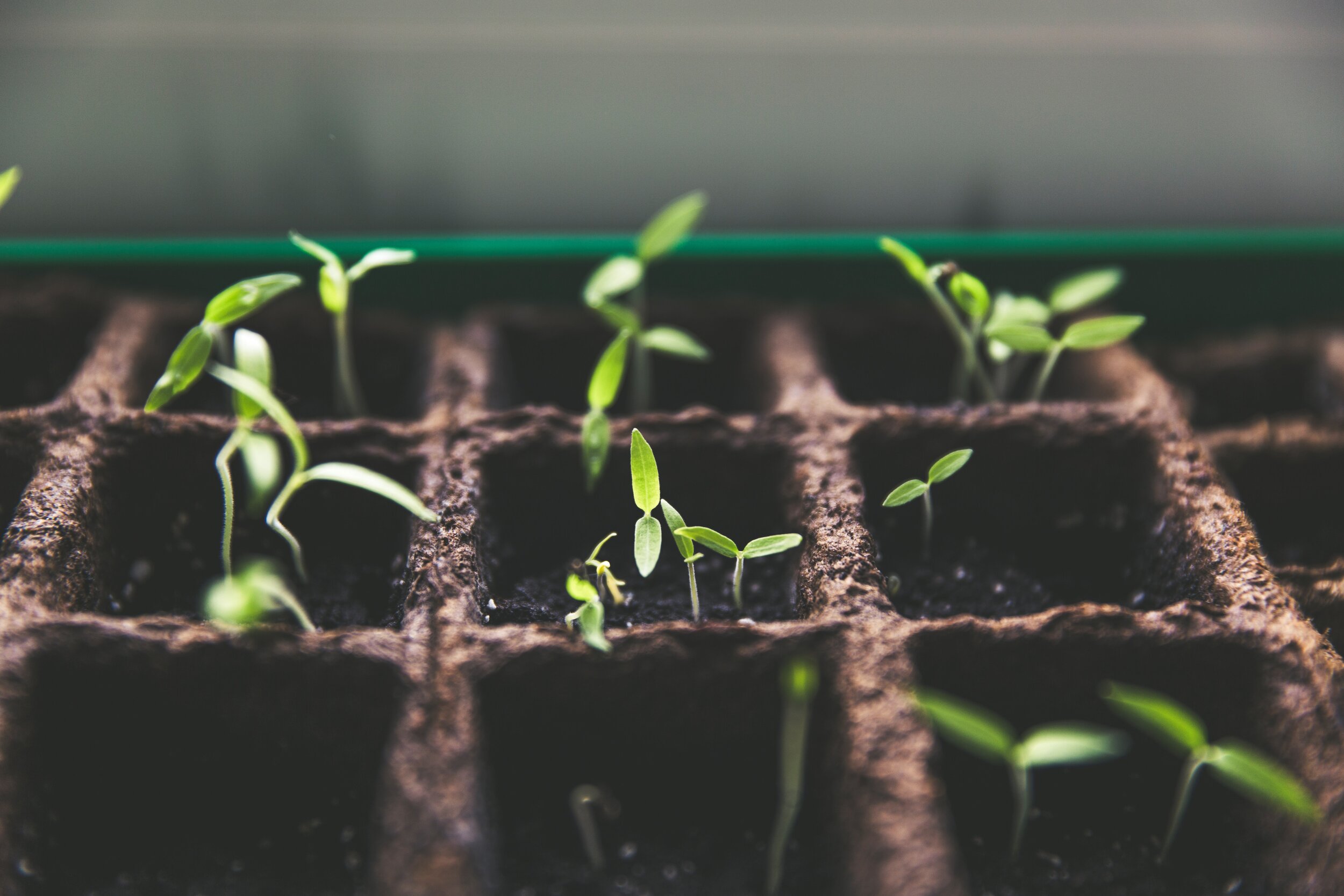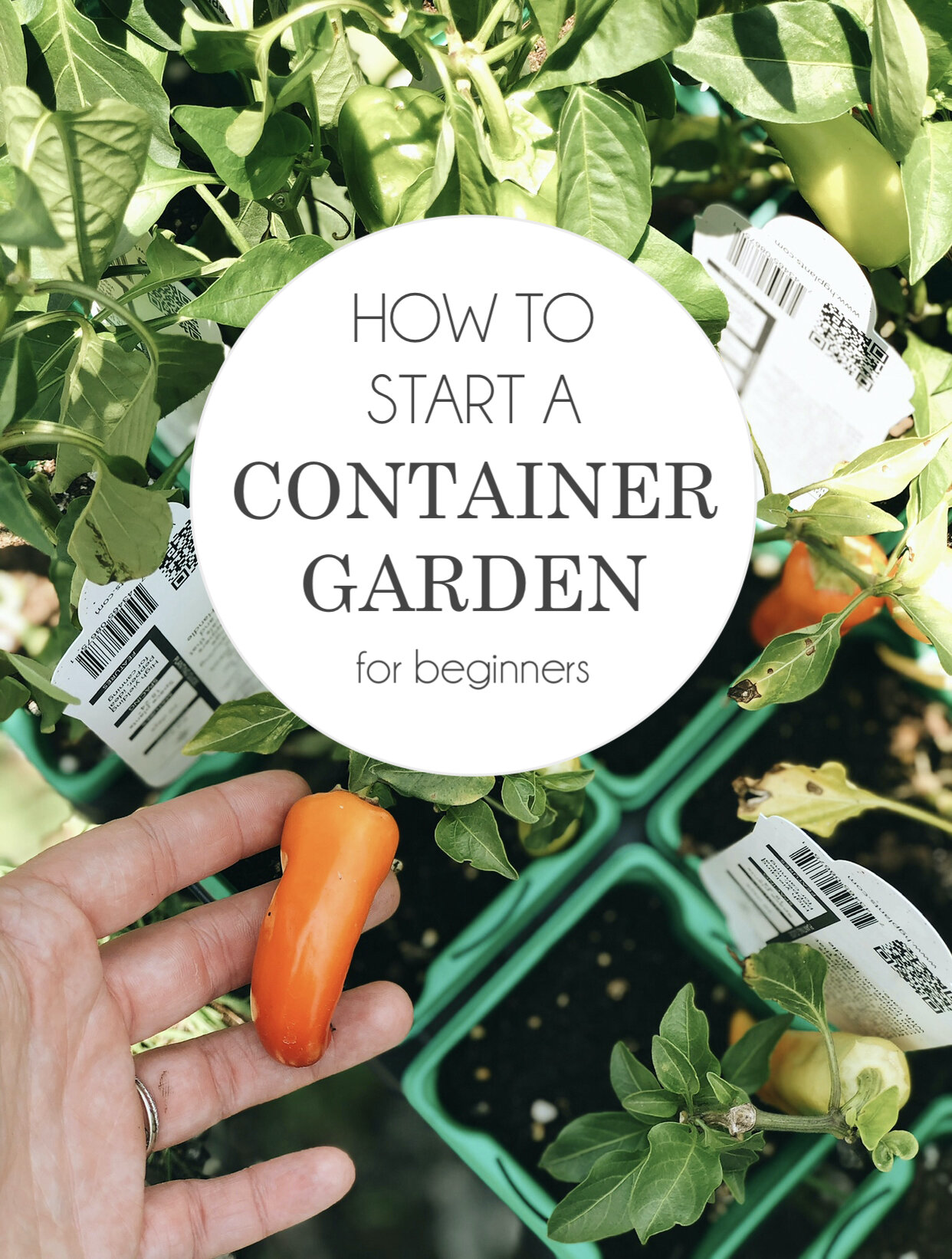
B L O G
3 Ways to Protect Your Plants from Frost
The beautiful season of spring is finally here for us in central North Carolina, but unfortunately, we do have an occasional frost that could cause devastation to our vegetable plants and delicate flowers. But don’t worry, Garden Valley has got you covered with 3 ways you can protect your plants from a cold frost:
The beautiful season of spring is finally here for us in central North Carolina, but unfortunately, we do have an occasional frost that could cause devastation to our vegetable plants and delicate flowers. But don’t worry, Garden Valley has got you covered with 3 ways you can protect your plants from a cold frost:
A little information first- A frost would be considered to happen between 28 and 32 degrees F. And as a general rule, most plants (tomatoes, annual flowers, watermelon, etc) will need to be covered unless they are cold tolerant, especially if they are starting to bloom.
3 ways to protect plants from frost
1. Cover with a breathable fabric.
Covering your plants with a breathable cloth like material will allow moisture to escape and not suffocate your plant like a plastic material would. You could use blankets, bed sheets, and even pillow cases for those small plants.
HOW? Just place a tall stake or stick throughout the area and cover. This will help keep the plant in tact and allows for room between the material and the plant. After all, we don’t want to crush our plants in the process, do we?
2. Cover with mulch/straw/leaves
Covering the soil around your plants with a mulch-like substance will help to regulate the swinging temperatures of the soil and keep prevent “shocking” your root system from the bitter cold. At least 3” of mulch, straw, or leaves should suffice.
3. Cover seedlings/small plants with a glass or cloche
Covering your smaller plants with a glass like material will help to keep the heat in but also allow for the sun to shine through.
HOW? Just cover your plant right before the sun goes down, and then uncover them when the temperature finally raises above freezing.
FROM GARDEN VALLEY:
Hopefully these tips will help you and your plants make it through the next few weeks before the temperatures stay above freezing. And we hope that they also help keep you planting better, eating better, and living better.
We would love to see how you keep your plants safe during the frost! Don’t forget to tag us on Facebook, Instagram, and TikTok! We can’t wait to see! @gardenvalleyfarmersmarket
6 Pro Tips for Successfully Growing Tasty Tomatoes
Tomatoes are the essence of summer here in North Carolina. Their gorgeous red, orange, purple, and yellow skins, filled with juicy, flavorful centers, leave us craving those fresh tomato sandwiches and homemade sauces all year long. And those gorgeous fruits, while not in short supply here at Garden Valley Farmers Market, can be grown on your own. With a little guidance, we can help you grow the juiciest tomatoes that are full of rich tasting flavor and have your vines overflowing all summer/fall long.
6 Pro Tips for Successfully Growing Tasty Tomatoes
Tomatoes are the essence of summer here in North Carolina. Their gorgeous red, orange, purple, and yellow skins, filled with juicy, flavorful centers, leave us craving those fresh tomato sandwiches and homemade sauces all year long. And those gorgeous fruits, while not in short supply here at Garden Valley Farmers Market, can be grown on your own. With a little guidance, we can help you grow the juiciest tomatoes that are full of rich tasting flavor and have your vines overflowing all summer/fall long.
But before we begin, let’s go over the basics. Tomatoes need three things to grow: LOTS of sun, consistent watering, and proper soil nutrition. Without one of these three things, unfortunately, your tomatoes will not yield the best results and might leave you disappointed this summer. So let’s focus on getting these steps right… and you’ll be golden.
Without further ado, here are Garden Valley’s 6 professional tips for growing delicious, tasty tomatoes:
1. Planting from Seedling (that you purchased at Garden Valley, of course)
WHEN? For zone 7b, which is central North Carolina, it is recommended that you plant your seedlings in late April or early May (a few weeks after your last frost).
HOW? Plant your tomatoes deep into the soil, up to the first leaf. This encourages new root growth from the stems. And the more root growth for your tomato plant means a strong and healthier stem that easily allows nutrients to pass through.
2. Pruning
Pruning is an essential step in growing healthy tomato plants. Tomato plants produce “suckers”, which is just a cute word for branches that grow between the main step and the branch. If allowed to grow, they can produce fruit, BUT they also make it more likely for your plant to develop a disease. Suckers will eventually overcrowd your plant if left to grow, which inhibits the sunlight exposure as well as air flow.
It’s also important to prune any dead branches that may have been damaged via a storm or etc. This will allow the other healthy stems to get all of the nutrients, instead of the dead branch.
Image via Gardening Know How
3. Watering
When first transplanting your tomato plants, lightly water the top layer of soil and be careful not to drown them. We also recommend adding a layer of mulch around the plants to help act as a moisture regulator.
WHEN? When watering, time of day truly does matter. Water your plants as early in the day as possible to prevent an increase of disease chance to your plant.
HOW? To properly water, slowly water around the stem of the plant, allowing sufficient time for the soil to soak it up. Do not drench your leaves, because unfortunately, wet leaves encourage disease. Watering around your stem, not directly on it, will also encourage outward root growth.
Your tomato plants will probably need a daily water check as well. If they look a little droopy/wilted, it’s probably time to water them.
4. Light
Full sun. Period.
5. Feeding
Tomatoes need lots of help with nutrients, and your backyard soil probably doesn’t cut it. Tomatoes LOVE nitrogen, which helps them grow healthy, tall, and FULL of fruit. So adding a good compost mix to your soil before planting will help your plants out tremendously. We also recommend fertilizing with a tomato specific fertilizer throughout the growing period to give them an added boost of nutrients.
FARMER’S TIP
Add a raw fish and crushed egg shells at the base of your tomato when planting. Your tomatoes will thank you.
6. Support
Tomatoes need lots of support due to the heavy fruits that they produce. These fruits will cause the branches to fall and lay on the ground, which will cause rot to your tomato. They are also susceptible to wind damage, so using tomato cages are the perfect way to protect your plants from themselves and natural surrounding elements.
Image via HGTV
5 Potential Pesky Pests and Problems
Tomato Horn Worm- those green giant worms that love to eat your ENTIRE plant. You can just pluck these off and chuck them far, far, far away.
Aphids- Can be controlled with ladybugs (which love to feast on aphids) or a homemade organic insecticidal soap (1 T castile soap : 1 qt. water)
Slugs- sprinkle diatomaceous earth around your plant to prevent them from entering
Blossom End Rot- black spots on fruit, which basically means your plant needs more calcium. Just add a good tomato fertilizer and that should help.]
Cracked Fruit- caused by inconsistent watering. Will usually heal over time.
From Garden Valley:
We wish you nothing but the best growing season, and that your tomato plants produce fruit “coming out of your ears”. If you need ideas on how to use your tomatoes, you can, of course, try this delicious Tomato Tart. OR you could try out this mouth watering Sicilian Pasta Sauce made by our own Susan Laparra. OR you could just make a good ole’ fashioned Southern Tomato Sandwich.
Whichever way you choose to use your tomatoes, we want to see them. Don’t forget to tag us on Facebook, Instagram, and TikTok! We can’t wait to see! @gardenvalleyfarmersmarket
Gardening for a Beginner; All About Containers and Grow Bags
This beautiful weather has us thinking ALL THINGS SPRING, and we’re so excited to get our hands dirty again. But for those of us who have absolutely no clue where to even begin with gardening, remember that we at Garden Valley have got your back. Whether you live in an apartment, are on a budget, or want to go full out this year in your yard, we’re covering 4 types of gardens, how you can start them, and how to keep your flowers and vegetables happy all season long.
This beautiful weather has us thinking ALL THINGS SPRING, and we’re so excited to get our hands dirty again. But for those of us who have absolutely no clue where to even begin with gardening, remember that we at Garden Valley have got your back. Whether you live in an apartment, are on a budget, or want to go full out this year in your yard, we’re covering 4 types of gardens, how you can start them, and how to keep your flowers and vegetables happy all season long.
T Y P E S O F G A R D E N S
+ Containers/Pots.
Containers are a great option if you live in an apartment, or are just wanting convenient and easy access to what you are growing. Here is a blog that features some great vegetables that grow well in pots. We recommend either using a terra cotta pot or coming by one of our stores and selecting some gorgeous ceramic pots. Our pottery would not only liven the decor of your patio or porch, but will also serve a purpose by growing your delicious vegetables, herbs, or flowers.
+ Grow Bags.
Bags? Who KNEW!? But with a little frugality, anything can be done, right? Grow Bags are one of the cheaper options if you don’t have a ton of room or land to garden, but also don’t have it in your budget to buy pots. They are also great if you just want to repurpose your bags. Have chickens? Reuse those feed bags! Here are some you can also buy online in case you do not have access to any bags.
+Raised Beds.
Raised beds are becoming very popular lately, and there’s a reason why: once built, they help protect your back, provide good drainage for your plants (if done right), allows for better weed control, can build anywhere in your yard, AND you can take them with you if you ever have to move houses.
+In Ground.
Ground gardening is a great option if you simply don’t have the funds to buy a bunch of pine/cedar boards (or the soil to fill it), but have a good amount of land to start digging. All it takes is some good, hard, and rewarding manual labor, and you’ve got yourself a beautiful, traditional garden.
From this point on, this post is going to focus on how to grow container/pot and grow-bag gardens. If you’re wanting to learn about how to grow a raised-bed or in-ground garden, that will be available next week!
T Y P E S O F C O N T A I N E R S
Ceramic/Concrete- is the most beautiful (in our opinion). Provides great insulation for your plant, which helps to control moisture and temperature for your soil.
Terracotta - has better aeration through the soil.
Metal- traps heat in your soil so be prepared to water very often because of this. (Makes great containers for tropical plants that can withstand heat)
Plastic- is cheaper, lighter in weight, and less watering because of the non-porous material.
Grow Bags- lightweight, great aeration for soil and roots of plant, prevents overwatering and heat build up in soil. All of these things equal up to healthy soil. Also easily storable by folding up for the winter. Because of the amazing aeration in these containers, the plants do not feel suffocated and will not “die off” as easily as they would in other containers.
W H E R E T O G R O W
One of the strengths of growing your vegetables and flowers in a container/bag is that you can move it ANYWHERE you want. Whether inside or outside, place your plant wherever it’s light needs will be met. With vegetables like tomatoes, cucumbers, or squash/zucchini you will need a space FULL sun, which is 6 or more hours of sunlight. But if you have a patio that has less sunlight exposure than 6 hours, maybe try growing broccoli, carrots, or cabbage.
W A T E R I N G
Drainage. With all container gardens, you want to make sure you have proper drainage for your plant. Otherwise, your plant may “drown” and cause root rot, leaving you with a VERY unhappy plant that provides no flower, fruit, or vegetable for your eyes or stomach to enjoy.
You can improve drainage in your containers by adding a layer of gravel to the bottom of your pot/container. If you don’t have access to gravel, you can use crushed up water bottles.
Containers
When watering your containers, continue watering until it seeps through the bottom of the pot/bag. Depending on your plant’s needs, you may need to either keep the soil moist by watering twice a day, or keep the soil more dry. Make sure to check your plant’s needs before throwing away the information tag!
Grow bags
When watering grow bags, since they are so porous, it might be best to put a container underneath them to fill with water, that way the roots are able to “suck up”’ the water, instead of the reverse where it drains out of the pot and is gone forever.
S O I L
The type of soil you use in your container might not seem like a big deal, but trust us, it is. Pick out a good quality potting soil that’s made for containers, as a garden soil is much too heavy for a pot. Why? Because potting soil is usually already mixed with sand, verlite, vermiculite, peat moss, and pebbles to allow for better water drainage. Whereas, a garden soil is pure topsoil and much too dense for the drainage of water.
S U P P O R T
Surprise, surprise, surprise, your plant is growing! YAY! But don’t sabotage it by not providing it with enough support. Plants that climb and grow up like tomatoes need support to hold them up. This helps not only keep the fruits from touching the ground, but allows for better sunlight and aeration to reach through the plant.
You can support your plant by building a “teepee” with some cane sticks and just tie the main branches to the cane as it grows.
F E R T I L I Z E
In order to keep your vegetables/flowers happy in your containers, they are going to need some more help than if they were planted in the ground. Be sure to fertilize with an organic fertilizer about twice a month in order to keep your plants happy and healthy all season long.
G E T T I N G S T A R T E D
Before starting, decide what you want to plant. For example, if you’re wanting to plant vegetables/fruit, ask yourself what you enjoy eating. What foods are sometimes expensive in the grocery store but you think would grow well in your container? Try those out and see how amazing gardening for yourself can actually be! Also, a good rule of thumb for the size of your container- the larger the plant, the larger the container needed. So make sure the container will be WIDE enough for the plant and DEEP enough for the roots of the mature plant.
WHEN STARTING WITH SEEDS
This process takes more time to see the “fruits” of your labour, but you are able to have more of a variety in which plant you actually want, because your local garden center may not have access to those starters. But always be sure to check with your garden center, aka Garden Valley for those of you local to the Triad of North Carolina. You can also check out this post we released last year on why we think shopping and supporting local is important.
When starting with seeds, vegetables will generally need to be propagated into seedlings before they are placed into your pot. You can reuse some old plastic containers that you’ve used for food like yogurt containers, egg shells, citrus peels, . Plastic is preferable in the instance because it retains moisture much better than a clay pot. Whatever container you do use, make sure it is clean and that you poke holes into the bottom to allow for drainage.
WHEN STARTING WITH STARTERS
With starters, the process is shortened and there is a better likelihood that your plant will survive. And we have plenty of starters vegetables and flowers to choose from at Garden Valley!
HOW TO GET IT STARTED
1. Add a layer of gravel to the bottom of your pot.
2. Fill pot with quality potting mix until you’ve reached level where the bottom of plant’s roots will land and water until soil is moist.
3. Place plant/s in soil and surround the plant with the rest of your potting mix.
4. Top with a layer of compost and water until it drains through the bottom of the pot.
We can’t wait to see what you will do this year! Don’t forget to tag us on our social
media so we can see how amazing your gardens look!
Thank you so much for joining us here. For more information on what Garden Valley Farmers Market is about, you can visit us here. If you’re wanting to visit with us, come by any of our five North Carolina locations. If you’re wanting to follow along with us, you can do so either on our Facebook, Youtube, or our Instagram. And if you’re wanting to check out our other recipes and blog posts, or are needing more inspiration, follow us on our Pinterest. We’d love to have you join us in our journey of planting better, eating better, and living better.
Much love,
Your Garden Valley Farmers Market Team







